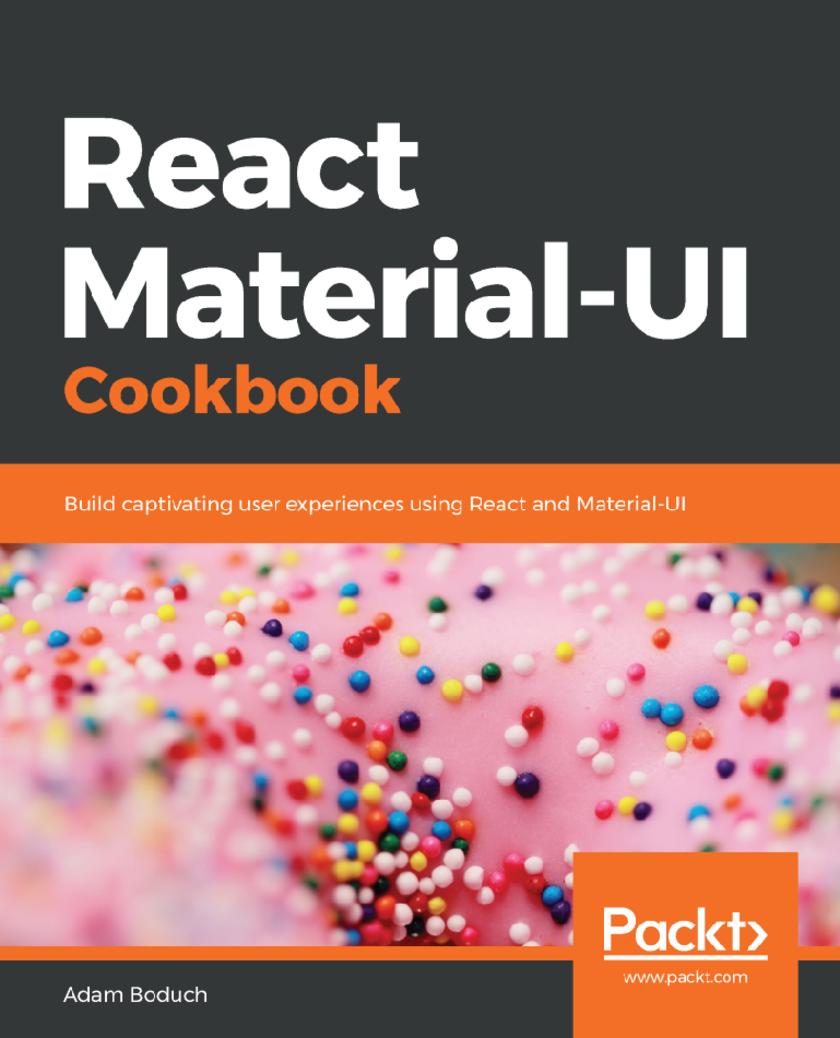
React Material-UI Cookbook
¥73.02
Build modern day application by implementing Material Design principles in React applications using Material-UI. Key Features * Grasp the needs React components for UI elements * Master the style and theme of the tools to go along with these components * Get to grips with all the React best practices to build a modern application Book Description Material-UI is a component library for rendering UI elements, using modern best practices from React and Material Design. This book will show you how you can create impressive and captivating modern day web apps by implementing Material Design considerations. The primary objective of this book is to help you use several Material-UI components to build larger UI functionality. We will also focus on React best practices in conjunction with Material-UI components – using state, context, and other new React 16.8 features properly. This book will start with layout and navigation and then dive into presenting the information with Material-UI components. It will then talk about the different components for user interactions. By the end of this book, you will know how to improve the look and feel of your applications using Material-UI components. What you will learn * Learn to build the overall structure and navigation for your Material-UI app * Learn to present simple and complex information in a variety of ways * Build interactive and intuitive controls * Design portable themes and styles for all of your Material-UI apps * Group content into sections using tabs and expansion panels * Learn how to design a general page layout with Material-UI grids * Use lists for complex data, and cards for detailed information Who this book is for They are JavaScript developers who have some basic knowledge of React and would want to implement Material Design principles in React applications using Material-UI. The reader wants to build a user interface using React components but doesn’t want to invent their own style or UX framework.

Data Science for Marketing Analytics
¥73.02
Explore new and more sophisticated tools that reduce your marketing analytics efforts and give you precise results Key Features * Study new techniques for marketing analytics * Explore uses of machine learning to power your marketing analyses * Work through each stage of data analytics with the help of multiple examples and exercises Book Description Data Science for Marketing Analytics covers every stage of data analytics, from working with a raw dataset to segmenting a population and modeling different parts of the population based on the segments. The book starts by teaching you how to use Python libraries, such as pandas and Matplotlib, to read data from Python, manipulate it, and create plots, using both categorical and continuous variables. Then, you'll learn how to segment a population into groups and use different clustering techniques to evaluate customer segmentation. As you make your way through the chapters, you'll explore ways to evaluate and select the best segmentation approach, and go on to create a linear regression model on customer value data to predict lifetime value. In the concluding chapters, you'll gain an understanding of regression techniques and tools for evaluating regression models, and explore ways to predict customer choice using classification algorithms. Finally, you'll apply these techniques to create a churn model for modeling customer product choices. By the end of this book, you will be able to build your own marketing reporting and interactive dashboard solutions. What you will learn * Analyze and visualize data in Python using pandas and Matplotlib * Study clustering techniques, such as hierarchical and k-means clustering * Create customer segments based on manipulated data * Predict customer lifetime value using linear regression * Use classification algorithms to understand customer choice * Optimize classification algorithms to extract maximal information Who this book is for Data Science for Marketing Analytics is designed for developers and marketing analysts looking to use new, more sophisticated tools in their marketing analytics efforts. It'll help if you have prior experience of coding in Python and knowledge of high school level mathematics. Some experience with databases, Excel, statistics, or Tableau is useful but not necessary.
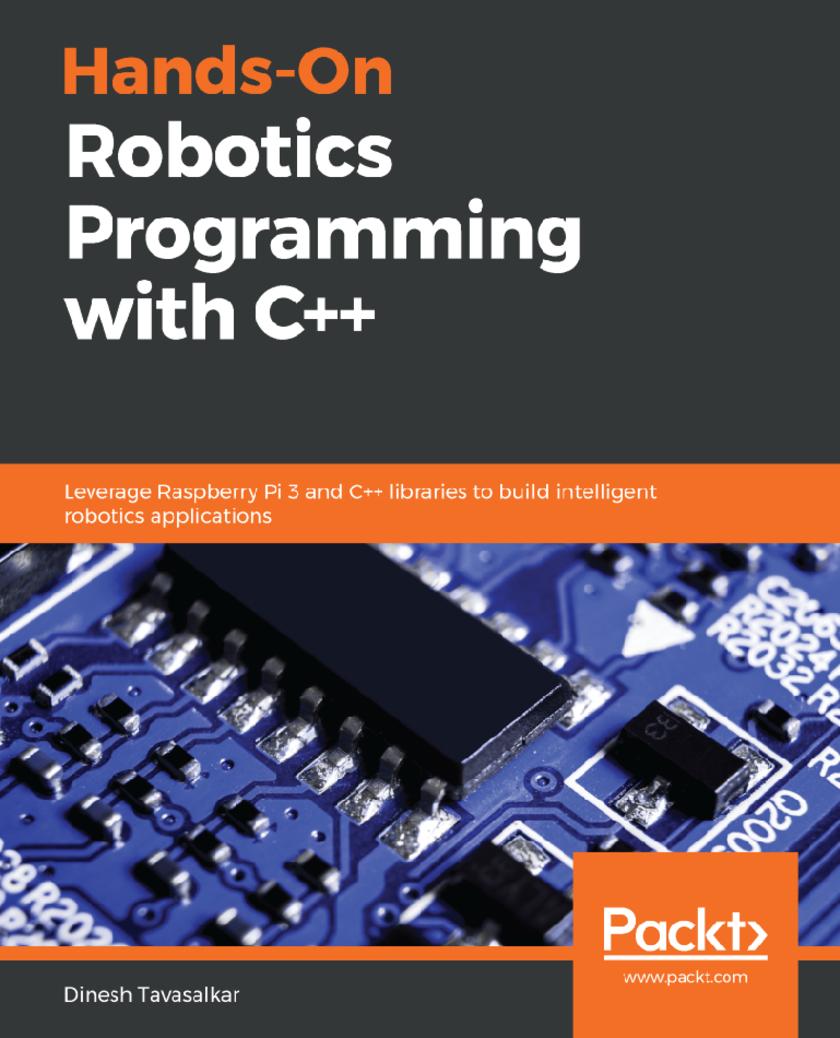
Hands-On Robotics Programming with C++
¥73.02
Enhance your programming skills to build exciting robotic projects Key Features * Build an intelligent robot that can detect and avoid obstacles and respond to voice commands * Detect and track objects and faces using OpenCV * Control your robot with a GUI button designed using Qt5 Book Description C++ is one of the most popular legacy programming languages for robotics, and a combination of C++ and robotics hardware is used in many leading industries. This book will bridge the gap between Raspberry Pi and C/C++ programming and enable you to develop applications for Raspberry Pi. To follow along with the projects covered in the book, you can implement C programs in Raspberry Pi with the wiringPi library. With this book, you’ll develop a fully functional car robot and write programs to move it in different directions. You’ll then create an obstacle - avoiding robot using an ultrasonic sensor. Furthermore, you’ll find out how to control the robot wirelessly using your PC/Mac. This book will also help you work with object detection and tracking using OpenCV, and guide you through exploring face detection techniques. Finally, you will create an Android app and control the robot wirelessly with an Android smartphone. By the end of this book, you will have gained experience in developing a robot using Raspberry Pi and C/C++ programming. What you will learn * Install software in Raspberry Pi compatible with C++ programming * Program the Raspberry Pi in C++ to run a motor * Control RPi-powered robot wirelessly with your laptop or PC * Program an RPi camera using OpenCV Control a Raspberry Pi robot with voice commands * Implement face and object detection with Raspberry Pi Who this book is for This book is for developers, programmers, and robotics enthusiasts interested in leveraging C++ to build exciting robotics applications. Prior knowledge of C++ is necessary to understand the projects covered in this book.

Learning Node.js Development
¥73.02
A comprehensive, easy-to-follow guide to creating complete Node apps and understanding how to build, deploy, and test your own apps. About This Book ? Entirely project-based and practical ? Explains the "Why" of Node.js features, not just the "how", providing you with a deep understanding and enabling you to easily apply concepts in your own applications ? Covers the full range of technologies around Node.js – NPM, version control with Git, and much more Who This Book Is For This book targets anyone looking to launch their own Node applications, switch careers, or freelance as a Node developer. You should have a basic understanding of JavaScript in order to follow this course. What You Will Learn ? Learn the fundamentals of Node ? Build apps that respond to user input ? Master working with servers ? Learn how to test and debug applications ? Deploy and update your apps in the real world ? Create responsive asynchronous web applications In Detail Learning Node.js Development is a practical, project-based book that provides you with all you need to get started as a Node.js developer. Node is a ubiquitous technology on the modern web, and an essential part of any web developers' toolkit. If you are looking to create real-world Node applications, or you want to switch careers or launch a side project to generate some extra income, then you're in the right place. This book has been written around a single goal—turning you into a professional Node developer capable of developing, testing, and deploying real-world production applications. Learning Node.js Development is built from the ground up around the latest version of Node.js (version 9.x.x). You'll be learning all the cutting-edge features available only in the latest software versions. This book cuts through the mass of information available around Node and delivers the essential skills that you need to become a Node developer. It takes you through creating complete apps and understanding how to build, deploy, and test your own Node apps. It maps out everything in a comprehensive, easy-to-follow package designed to get you up and running quickly. Style and approach This book is entirely project-based. From the very beginning you'll be programming every single app and completing various challenges designed to help test and reinforce what you've learned. There's no copying-and-pasting here. This book is about writing code and building projects.
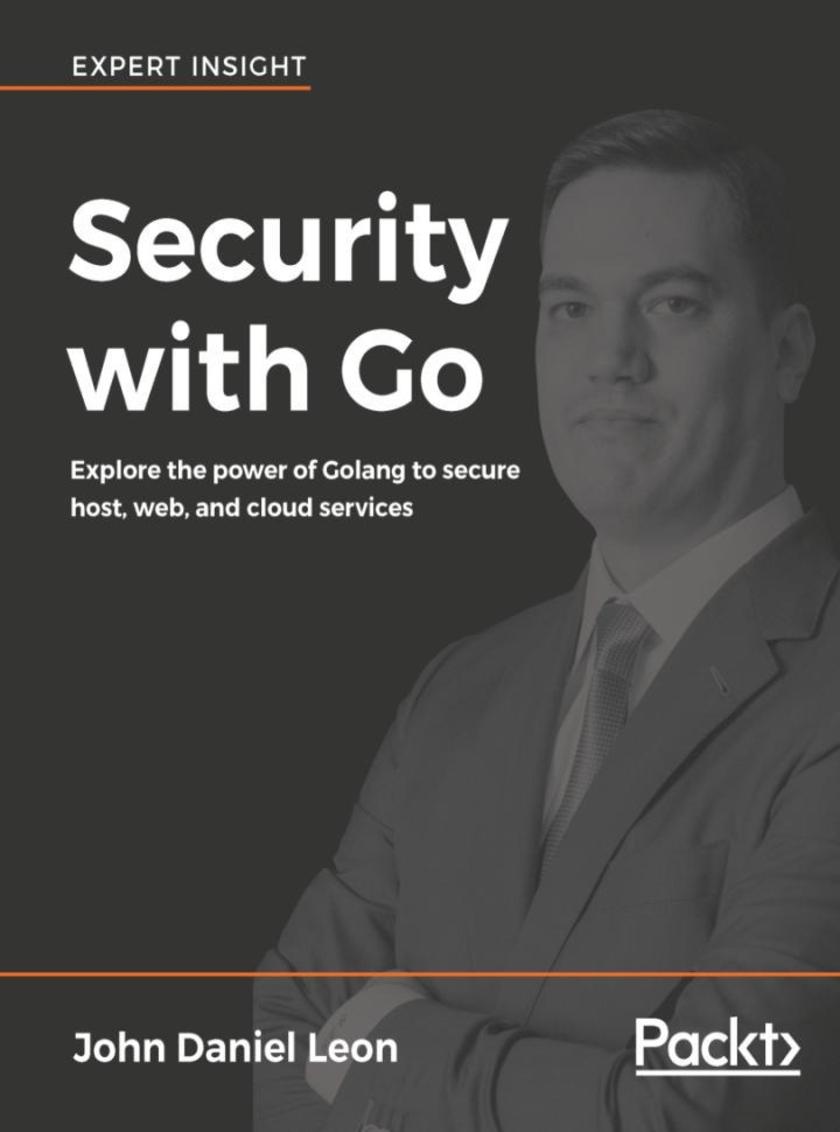
Security with Go
¥73.02
The first stop for your security needs when using Go, covering host, network, and cloud security for ethical hackers and defense against intrusion About This Book ? First introduction to Security with Golang ? Adopting a Blue Team/Red Team approach ? Take advantage of speed and inherent safety of Golang ? Works as an introduction to security for Golang developers ? Works as a guide to Golang security packages for recent Golang beginners Who This Book Is For Security with Go is aimed at developers with basics in Go to the level that they can write their own *s and small programs without difficulty. Readers should be familiar with security concepts, and familiarity with Python security applications and libraries is an advantage, but not a necessity. What You Will Learn ? Learn the basic concepts and principles of secure programming ? Write secure Golang programs and applications ? Understand classic patterns of attack ? Write Golang *s to defend against network-level attacks ? Learn how to use Golang security packages ? Apply and explore cryptographic methods and packages ? Learn the art of defending against brute force attacks ? Secure web and cloud applications In Detail Go is becoming more and more popular as a language for security experts. Its wide use in server and cloud environments, its speed and ease of use, and its evident capabilities for data analysis, have made it a prime choice for developers who need to think about security. Security with Go is the first Golang security book, and it is useful for both blue team and red team applications. With this book, you will learn how to write secure software, monitor your systems, secure your data, attack systems, and extract information. Defensive topics include cryptography, forensics, packet capturing, and building secure web applications. Offensive topics include brute force, port scanning, packet injection, web scraping, social engineering, and post exploitation techniques. Style and approach John Leon has divided the book into two parts which present the team playing defense against anyone breaking into servers and the team playing (ethical!) offense to perform said attacks. All Go *s and programs are workable solutions that can be easily understood and expanded upon by anyone with a system administrator’s level view of networking and cloud-based systems. Golang developers will profit from a swift and incisive approach to security.
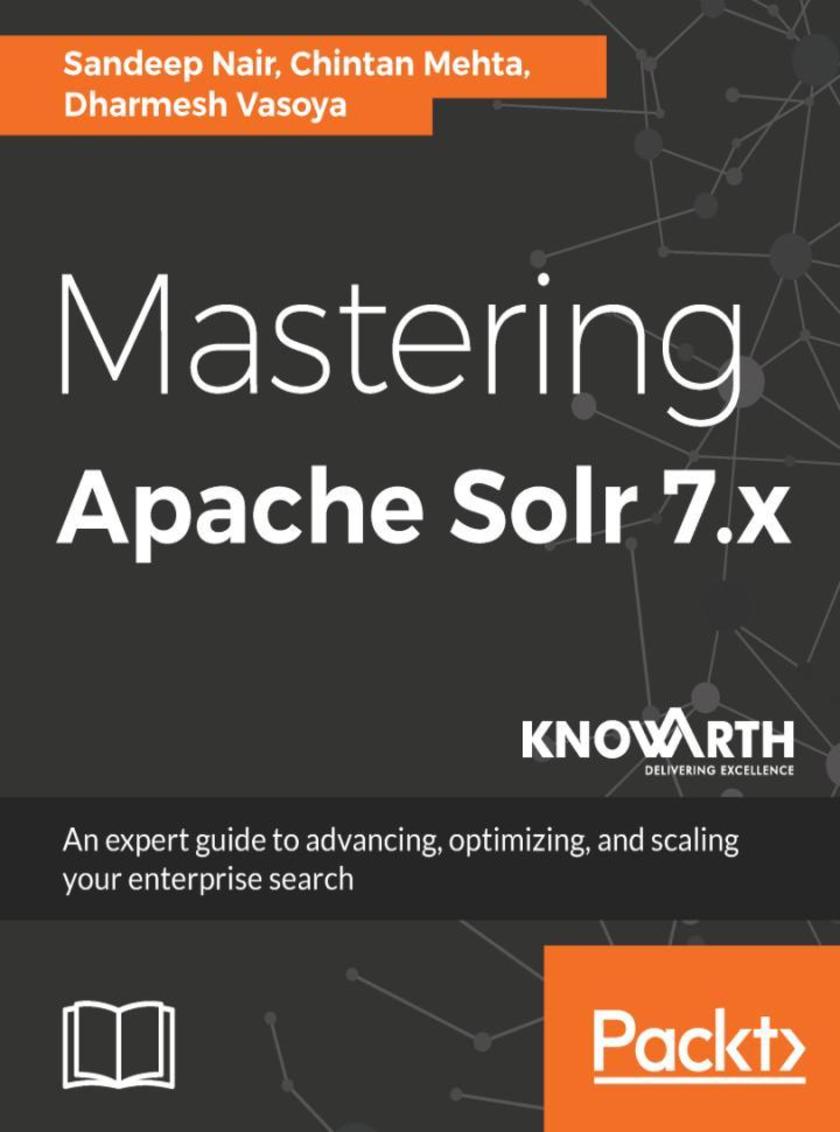
Mastering Apache Solr 7.x
¥73.02
Accelerate your enterprise search engine and bring relevancy in your search analytics About This Book ? A practical guide in building expertise with Indexing, Faceting, Clustering and Pagination ? Master the management and administration of Enterprise Search Applications and services seamlessly ? Handle multiple data inputs such as JSON, xml, pdf, doc, xls,ppt, csv and much more. Who This Book Is For The book would rightly appeal to developers, software engineers, data engineers and database architects who are building or seeking to build enterprise-wide effective search engines for business intelligence. Prior experience of Apache Solr or Java programming is must to take the best of this book. What You Will Learn ? Design schema using schema API to access data in the database ? Advance querying and fine-tuning techniques for better performance ? Get to grips with indexing using Client API ? Set up a fault tolerant and highly available server with newer distributed capabilities, SolrCloud ? Explore Apache Tika to upload data with Solr Cell ? Understand different data operations that can be done while indexing ? Master advanced querying through Velocity Search UI, faceting and Query Re-ranking, pagination and spatial search ? Learn to use JavaScript, Python, SolrJ and Ruby for interacting with Solr In Detail Apache Solr is the only standalone enterprise search server with a REST-like application interface. providing highly scalable, distributed search and index replication for many of the world's largest internet sites. To begin with, you would be introduced to how you perform full text search, multiple filter search, perform dynamic clustering and so on helping you to brush up the basics of Apache Solr. You will also explore the new features and advanced options released in Apache Solr 7.x which will get you numerous performance aspects and making data investigation simpler, easier and powerful. You will learn to build complex queries, extensive filters and how are they compiled in your system to bring relevance in your search tools. You will learn to carry out Solr scoring, elements affecting the document score and how you can optimize or tune the score for the application at hand. You will learn to extract features of documents, writing complex queries in re-ranking the documents. You will also learn advanced options helping you to know what content is indexed and how the extracted content is indexed. Throughout the book, you would go through complex problems with solutions along with varied approaches to tackle your business needs. By the end of this book, you will gain advanced proficiency to build out-of-box smart search solutions for your enterprise demands. Style and approach An advance guide which will take you through complex problems with solutions along with varied approaches to tackle your business needs by using Apache solr 7.x
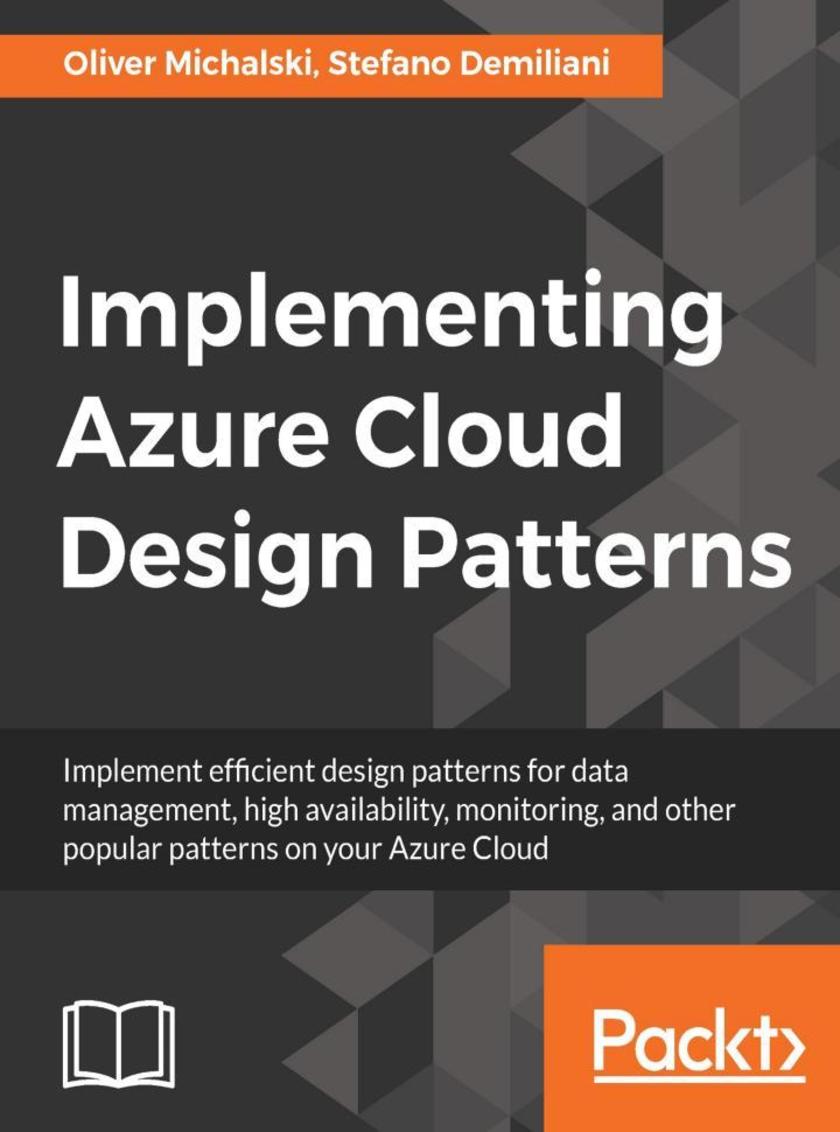
Implementing Azure Cloud Design Patterns
¥73.02
A hands-on guide to mastering Azure cloud design patterns and best practices. About This Book ? Master architectural design patterns in Azure. ? Get hands-on with implementing design patterns. ? Implement best practices for improving efficiency and security Who This Book Is For This book is targeted at cloud architects and cloud solution providers who are looking for an extensive guide to implementing different patterns for the deployment and maintenance of services in Microsoft Azure. Prior experience with Azure is required as the book is completely focused on design patterns. What You Will Learn ? Learn to organize Azure access ? Design the core areas of the Azure Execution Model ? Work with storage and data management ? Create a health endpoint monitoring pattern ? Automate early detection of anomalies ? Identify and secure Azure features In Detail A well designed cloud infrastructure covers factors such as consistency, maintenance, simplified administration and development, and reusability. Hence it is important to choose the right architectural pattern as it has a huge impact on the quality of cloud-hosted services. This book covers all Azure design patterns and functionalities to help you build your cloud infrastructure so it fits your system requirements. This book initially covers design patterns that are focused on factors such as availability and data management/monitoring. Then the focus shifts to complex design patterns such as multitasking, improving scalability, valet keys, and so on, with practical use cases. The book also supplies best practices to improve the security and performance of your cloud. By the end of this book, you will thoroughly be familiar with the different design and architectural patterns available with Windows Azure and capable of choosing the best pattern for your system. Style and approach This step-by-step guide will help you master Azure design patterns and functionalities and also supplies best practices towards the end of the book.
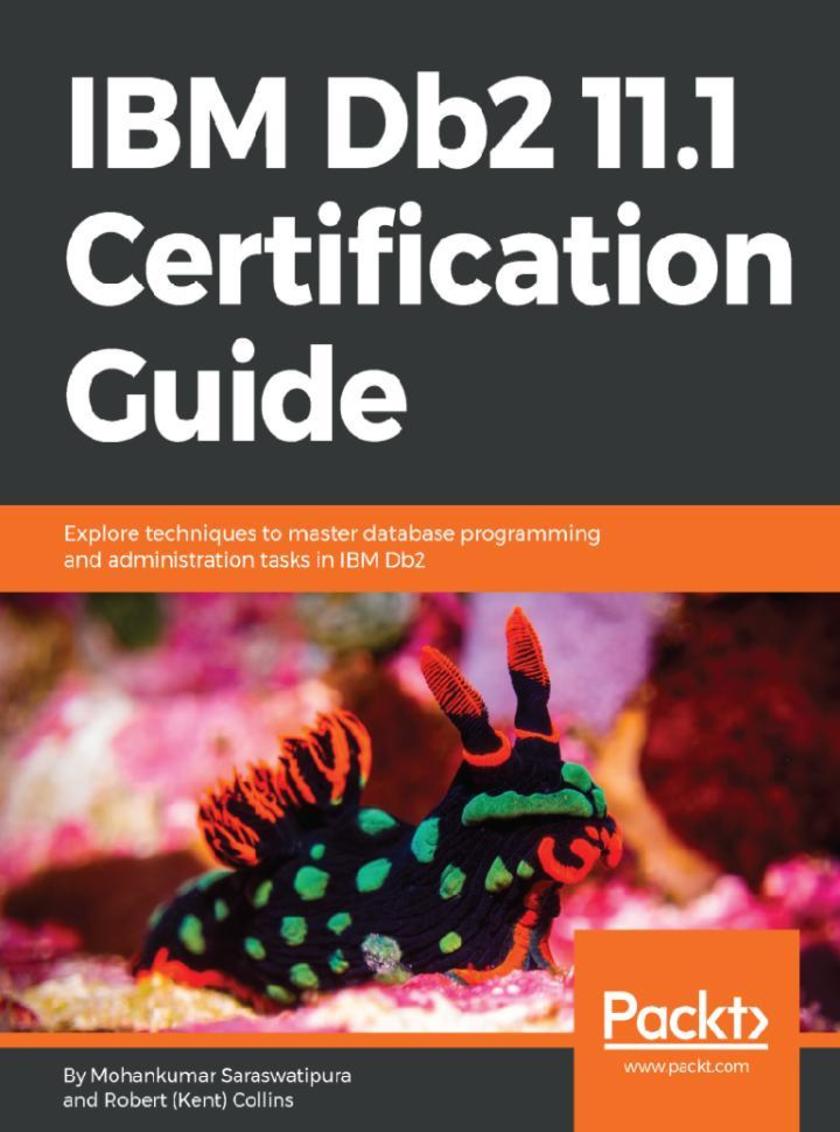
IBM Db2 11.1 Certification Guide
¥73.02
Mastering material for dealing with DBA certification exams About This Book ? Prepare yourself for the IBM C2090-600 certification exam ? Cover over 50 Db2 procedures including database design, performance, and security ? Work through over 150 Q&As to gain confidence on each topic Who This Book Is For The IBM Db2 11.1 Certification Guide is an excellent choice for database administrators, architects, and application developers who are keen to obtain certification in Db2. Basic understanding of Db2 is expected in order to get the most out of this guide. What You Will Learn ? Configure and manage Db2 servers, instances, and databases ? Implement Db2 BLU Acceleration and a DB2 pureScale environment ? Create, manage, and alter Db2 database objects ? Use the partitioning capabilities available within Db2 ? Enforce constraint checking with the SET INTEGRITY command ? Utilize the Db2 problem determination (db2pd) and dsmtop tools ? Configure and manage HADR ? Understand how to encrypt data in transit and at rest In Detail IBM Db2 is a relational database management system (RDBMS) that helps you store, analyze, and retrieve data efficiently. This comprehensive book is designed to help you master all aspects of IBM Db2 database administration and prepare you to take and pass IBM's Certification Exams C2090-600. Building on years of extensive experience, the authors take you through all areas covered by the test. The book delves deep into each certification topic: Db2 server management, physical design, business rules implementation, activity monitoring, utilities, high availability, and security. IBM Db2 11.1 Certification Guide provides you with more than 150 practice questions and answers, simulating real certification examination questions. Each chapter includes an extensive set of practice questions along with carefully explained answers. This book will not just prepare you for the C2090-600 exam but also help you troubleshoot day-to-day database administration challenges. Style and approach A comprehensive certification preparation guide for the C2090-600 exam, covering all the topics in greater detail and with sample questions and answers at the end of each chapter.
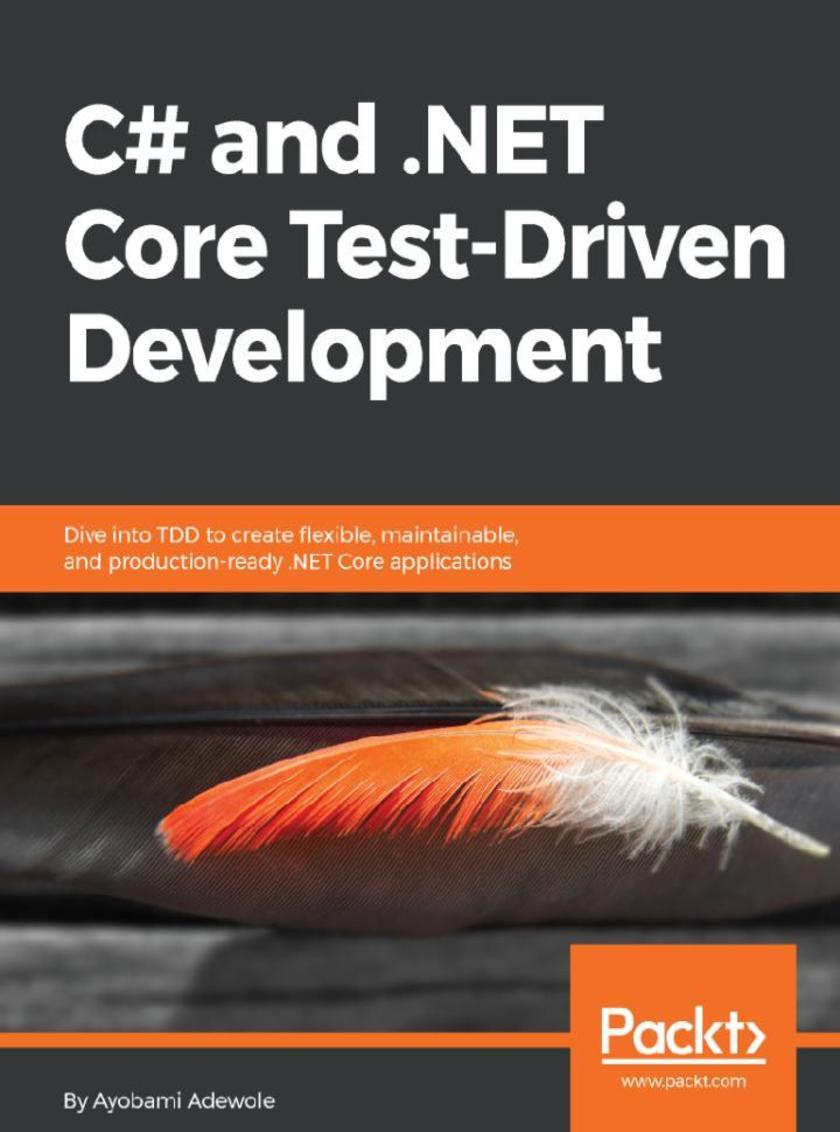
C# and .NET Core Test Driven Development
¥73.02
Learn how to apply a test-driven development process by building ready C# 7 and .NET Core applications. About This Book ? Create tests to quickly detect and resolve issues when writing portable code ? Uncover code integration issues that improve code quality using continuous integration ? Set up and use data-driven unit testing to verify your code Who This Book Is For This book is for .NET developers who would like to build efficient applications by implementing principles of test-driven development. C# programming and working knowledge of VS is assumed. What You Will Learn ? Write flexible, maintainable, and verifiable code for .NET Core ? Write testable code using SOLID principles and dependency injections ? Recognize the characteristics of a good unit test ? Structure and group your unit test ? Use mock objects to handle dependencies ? Set up an end-to-end continuous integration process In Detail This book guides developers to create robust, production-ready C# 7 and .NET Core applications through the practice of test-driven development process. In C# and .NET Core Test-Driven Development, you will learn the different stages of the TDD life cycle, basics of TDD, best practices, and anti-patterns. It will teach you how to create an ASP.NET Core MVC sample application, write testable code with SOLID principles and set up a dependency injection for your sample application. Next, you will learn the xUnit testing framework and learn how to use its attributes and assertions. You’ll see how to create data-driven unit tests and mock dependencies in your code. You will understand the difference between running and debugging your tests on .NET Core on LINUX versus Windows and Visual Studio. As you move forward, you will be able to create a healthy continuous integration process for your sample application using GitHub, TeamCity, Cake, and Microsoft VSTS. By the end of this book, you will have learned how to write clean and robust code through the effective practice of TDD, set up CI build steps to test and build applications as well as how to package application for deployment on NuGet. Style and approach The book explores the concepts of test driven development in depth so readers can apply these proven techniques to build sophisticated software with C# and .NET.

Learn Swift by Building Applications
¥73.02
Start building your very own mobile apps with this comprehensive introduction to Swift and object-oriented programming About This Book ? A complete beginner's guide to Swift programming language ? Understand core Swift programming concepts and techniques for creating popular iOS apps ? Start your journey toward building mobile app development with this practical guide Who This Book Is For This book is for beginners who are new to Swift or may have some preliminary knowledge of Objective-C. If you are interested in learning and mastering Swift in Apple’s ecosystem, namely mobile development, then this book is for you. What You Will Learn ? Become a pro at iOS development by creating simple-to-complex iOS mobile applications ? Master Playgrounds, a unique and intuitive approach to teaching Xcode ? Tackle the basics, including variables, if clauses, functions, loops and structures, classes, and inheritance ? Model real-world objects in Swift and have an in-depth understanding of the data structures used, along with OOP concepts and protocols ? Use CocoaPods, an open source Swift package manager to ease your everyday developer requirements ? Develop a wide range of apps, from a simple weather app to an Instagram-like social app ? Get ahead in the industry by learning how to use third-party libraries efficiently in your apps In Detail Swift Language is now more powerful than ever; it has introduced new ways to solve old problems and has gone on to become one of the fastest growing popular languages. It is now a de-facto choice for iOS developers and it powers most of the newly released and popular apps. This practical guide will help you to begin your journey with Swift programming through learning how to build iOS apps. You will learn all about basic variables, if clauses, functions, loops, and other core concepts; then structures, classes, and inheritance will be discussed. Next, you’ll dive into developing a weather app that consumes data from the internet and presents information to the user. The final project is more complex, involving creating an Instagram like app that integrates different external libraries. The app also uses CocoaPods as its package dependency manager, to give you a cutting-edge tool to add to your skillset. By the end of the book, you will have learned how to model real-world apps in Swift. Style and approach This book has a very practical and hands-on approach towards teaching the user the new and advanced features of Swift.
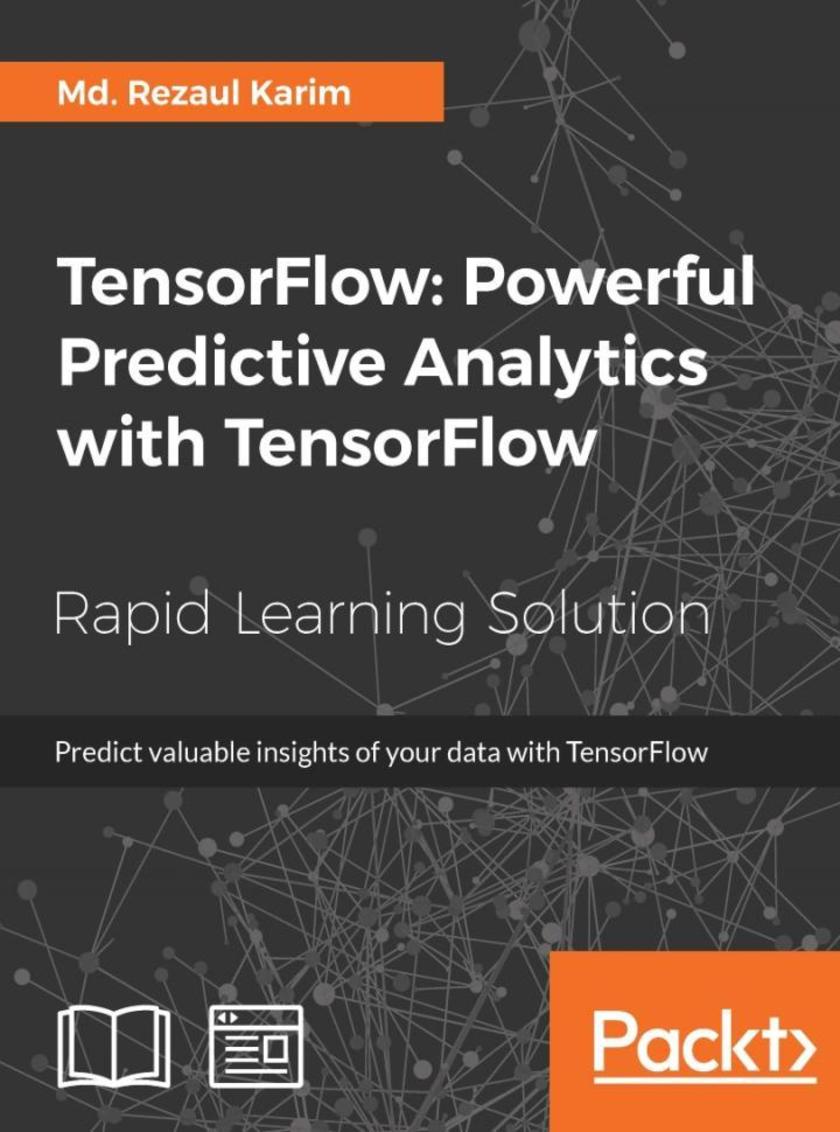
TensorFlow: Powerful Predictive Analytics with TensorFlow
¥73.02
Learn how to solve real life problems using different methods like logic regression, random forests and SVM’s with TensorFlow. About This Book ? Understand predictive analytics along with its challenges and best practices ? Embedded with assessments that will help you revise the concepts you have learned in this book Who This Book Is For This book is aimed at developers, data analysts, machine learning practitioners, and deep learning enthusiasts who want to build powerful, robust, and accurate predictive models with the power of TensorFlow. What You Will Learn ? Learn TensorFlow features in a real-life problem, followed by detailed TensorFlow installation and configuration ? Explore computation graphs, data, and programming models also get an insight into an example of implementing linear regression model for predictive analytics ? Solve the Titanic survival problem using logistic regression, random forests, and SVMs for predictive analytics ? Dig deeper into predictive analytics and find out how to take advantage of it to cluster records belonging to the certain group or class for a dataset of unsupervised observations ? Learn several examples of how to apply reinforcement learning algorithms for developing predictive models on real-life datasets In Detail Predictive analytics discovers hidden patterns from structured and unstructured data for automated decision making in business intelligence. Predictive decisions are becoming a huge trend worldwide, catering to wide industry sectors by predicting which decisions are more likely to give maximum results. TensorFlow, Google’s brainchild, is immensely popular and extensively used for predictive analysis. This book is a quick learning guide on all the three types of machine learning, that is, supervised, unsupervised, and reinforcement learning with TensorFlow. This book will teach you predictive analytics for high-dimensional and sequence data. In particular, you will learn the linear regression model for regression analysis. You will also learn how to use regression for predicting continuous values. You will learn supervised learning algorithms for predictive analytics. You will explore unsupervised learning and clustering using K-meansYou will then learn how to predict neighborhoods using K-means, and then, see another example of clustering audio clips based on their audio features. This book is ideal for developers, data analysts, machine learning practitioners, and deep learning enthusiasts who want to build powerful, robust, and accurate predictive models with the power of TensorFlow. This book is embedded with useful assessments that will help you revise the concepts you have learned in this book. Style and approach This is a fast-paced guide that provides a quick learning solution to all the three types of machine learning, that is, supervised, unsupervised, and reinforcement learning with TensorFlow Note: This book is a blend of text and quizzes, all packaged up keeping your journey in mind. It includes content from the following Packt product: ? Predictive Analytics with TensorFlow by Md. Rezaul Karim
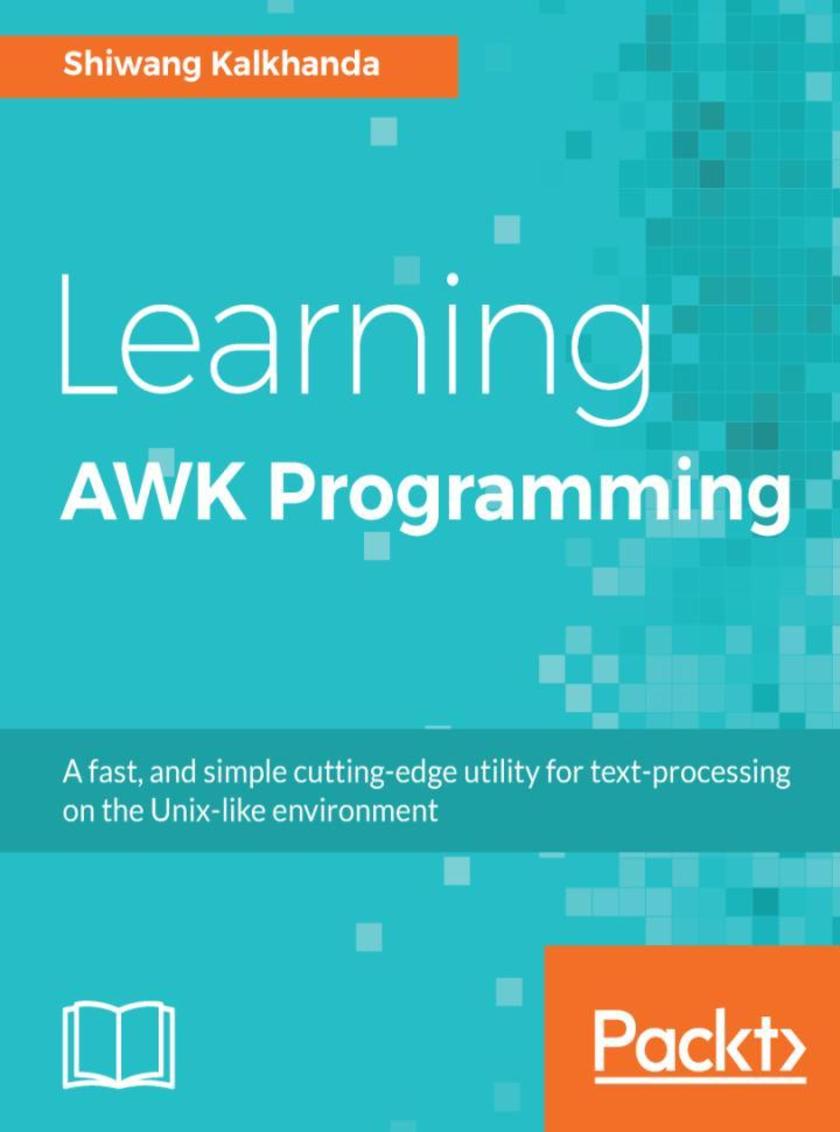
Learning AWK Programming
¥73.02
Text processing and pattern matching simplified About This Book ? Master the fastest and most elegant big data munging language ? Implement text processing and pattern matching using the advanced features of AWK and GAWK ? Implement debugging and inter-process communication using GAWK Who This Book Is For This book is for developers or analysts who are inclined to learn how to do text processing and data extraction in a Unix-like environment. Basic understanding of Linux operating system and shell scripting will help you to get the most out of the book. What You Will Learn ? Create and use different expressions and control flow statements in AWK ? Use Regular Expressions with AWK for effective text-processing ? Use built-in and user-defined variables to write AWK programs ? Use redirections in AWK programs and create structured reports ? Handle non-decimal input, 2-way inter-process communication with Gawk ? Create small scripts to reformat data to match patterns and process texts In Detail AWK is one of the most primitive and powerful utilities which exists in all Unix and Unix-like distributions. It is used as a command-line utility when performing a basic text-processing operation, and as programming language when dealing with complex text-processing and mining tasks. With this book, you will have the required expertise to practice advanced AWK programming in real-life examples. The book starts off with an introduction to AWK essentials. You will then be introduced to regular expressions, AWK variables and constants, arrays and AWK functions and more. The book then delves deeper into more complex tasks, such as printing formatted output in AWK, control flow statements, GNU's implementation of AWK covering the advanced features of GNU AWK, such as network communication, debugging, and inter-process communication in the GAWK programming language which is not easily possible with AWK. By the end of this book, the reader will have worked on the practical implementation of text processing and pattern matching using AWK to perform routine tasks. Style and approach An easy-to-follow, step by step guide which will help you get to grips with real-world applications of AWK programming.
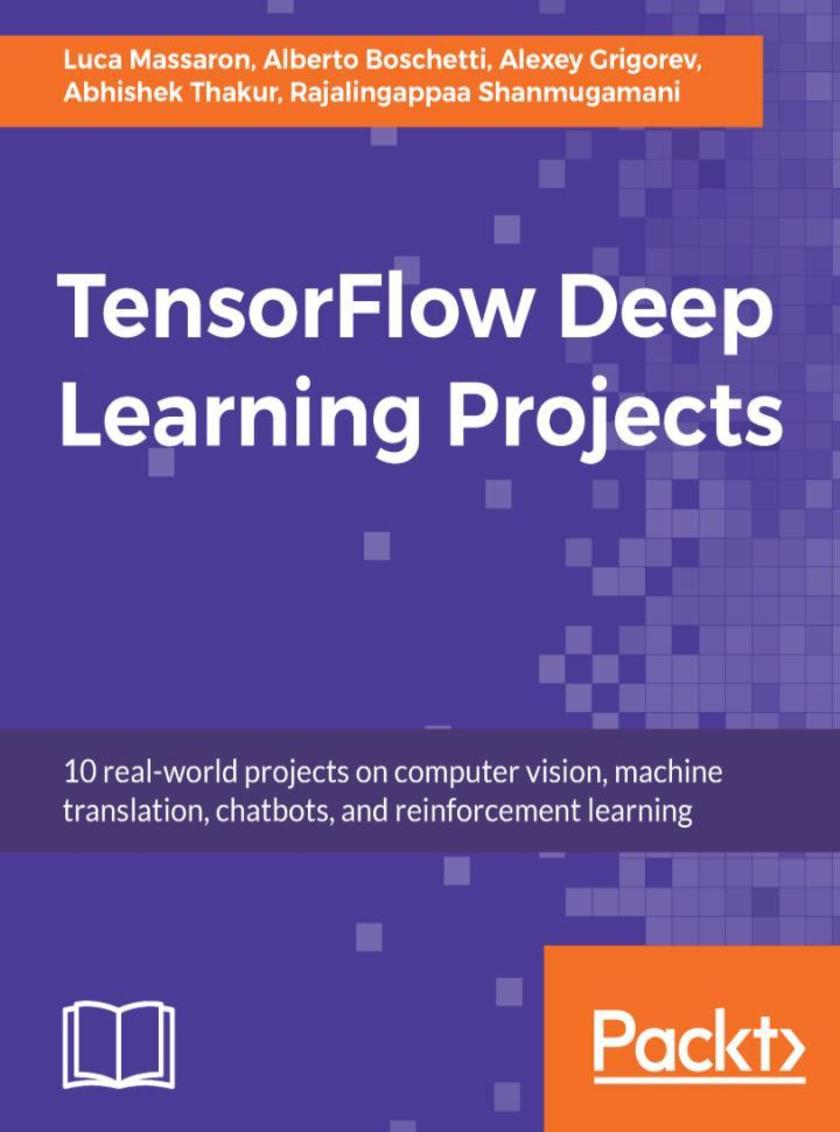
TensorFlow Deep Learning Projects
¥73.02
Leverage the power of Tensorflow to design deep learning systems for a variety of real-world scenarios About This Book ? Build efficient deep learning pipelines using the popular Tensorflow framework ? Train neural networks such as ConvNets, generative models, and LSTMs ? Includes projects related to Computer Vision, stock prediction, chatbots and more Who This Book Is For This book is for data scientists, machine learning developers as well as deep learning practitioners, who want to build interesting deep learning projects that leverage the power of Tensorflow. Some understanding of machine learning and deep learning, and familiarity with the TensorFlow framework is all you need to get started with this book. What You Will Learn ? Set up the TensorFlow environment for deep learning ? Construct your own ConvNets for effective image processing ? Use LSTMs for image caption generation ? Forecast stock prediction accurately with an LSTM architecture ? Learn what semantic matching is by detecting duplicate Quora questions ? Set up an AWS instance with TensorFlow to train GANs ? Train and set up a chatbot to understand and interpret human input ? Build an AI capable of playing a video game by itself –and win it! In Detail TensorFlow is one of the most popular frameworks used for machine learning and, more recently, deep learning. It provides a fast and efficient framework for training different kinds of deep learning models, with very high accuracy. This book is your guide to master deep learning with TensorFlow with the help of 10 real-world projects. TensorFlow Deep Learning Projects starts with setting up the right TensorFlow environment for deep learning. Learn to train different types of deep learning models using TensorFlow, including Convolutional Neural Networks, Recurrent Neural Networks, LSTMs, and Generative Adversarial Networks. While doing so, you will build end-to-end deep learning solutions to tackle different real-world problems in image processing, recommendation systems, stock prediction, and building chatbots, to name a few. You will also develop systems that perform machine translation, and use reinforcement learning techniques to play games. By the end of this book, you will have mastered all the concepts of deep learning and their implementation with TensorFlow, and will be able to build and train your own deep learning models with TensorFlow confidently. Style and approach This book contains 10 unique, end-to-end projects covering all aspects of deep learning and their implementations with TensorFlow. Each project will equip you with a unique skillset in training efficient deep learning models, and empower you to implement your own projects more confidently
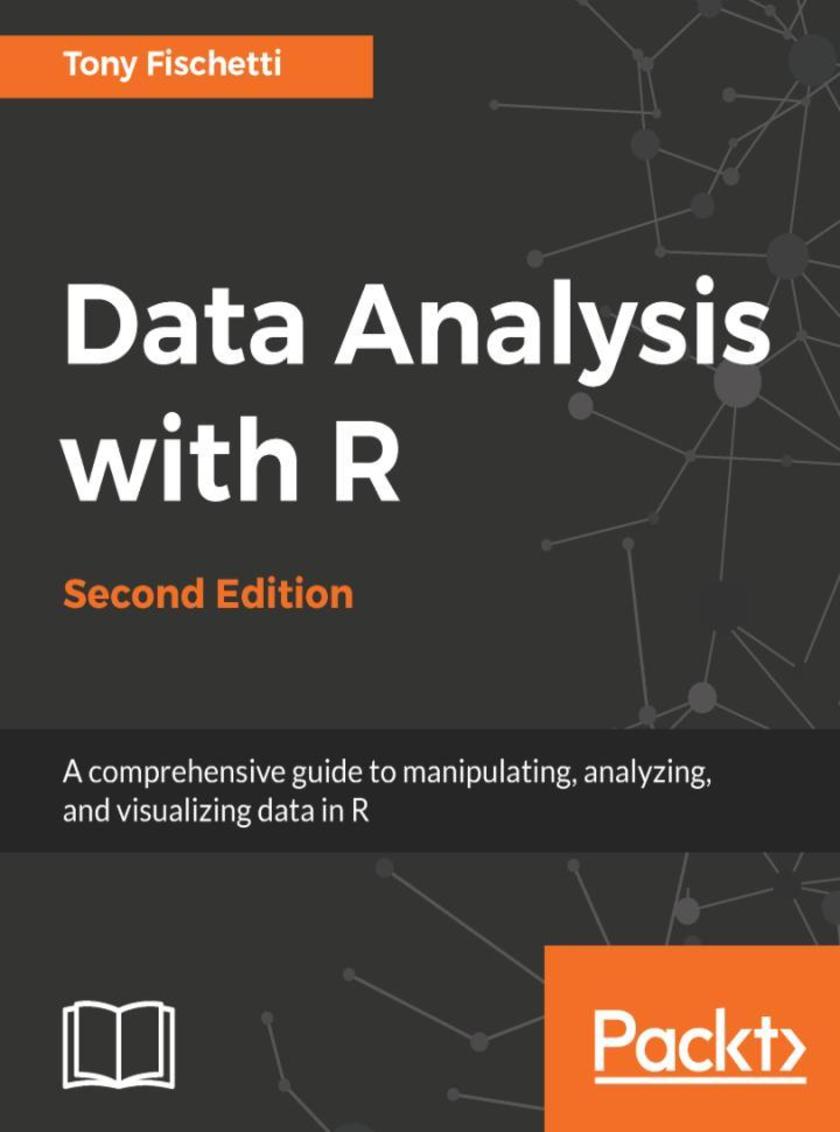
Data Analysis with R - Second Edition
¥73.02
Learn, by example, the fundamentals of data analysis as well as several intermediate to advanced methods and techniques ranging from classification and regression to Bayesian methods and MCMC, which can be put to immediate use. About This Book ? Analyze your data using R – the most powerful statistical programming language ? Learn how to implement applied statistics using practical use-cases ? Use popular R packages to work with unstructured and structured data Who This Book Is For Budding data scientists and data analysts who are new to the concept of data analysis, or who want to build efficient analytical models in R will find this book to be useful. No prior exposure to data analysis is needed, although a fundamental understanding of the R programming language is required to get the best out of this book. What You Will Learn ? Gain a thorough understanding of statistical reasoning and sampling theory ? Employ hypothesis testing to draw inferences from your data ? Learn Bayesian methods for estimating parameters ? Train regression, classification, and time series models ? Handle missing data gracefully using multiple imputation ? Identify and manage problematic data points ? Learn how to scale your analyses to larger data with Rcpp, data.table, dplyr, and parallelization ? Put best practices into effect to make your job easier and facilitate reproducibility In Detail Frequently the tool of choice for academics, R has spread deep into the private sector and can be found in the production pipelines at some of the most advanced and successful enterprises. The power and domain-specificity of R allows the user to express complex analytics easily, quickly, and succinctly. Starting with the basics of R and statistical reasoning, this book dives into advanced predictive analytics, showing how to apply those techniques to real-world data though with real-world examples. Packed with engaging problems and exercises, this book begins with a review of R and its syntax with packages like Rcpp, ggplot2, and dplyr. From there, get to grips with the fundamentals of applied statistics and build on this knowledge to perform sophisticated and powerful analytics. Solve the difficulties relating to performing data analysis in practice and find solutions to working with messy data, large data, communicating results, and facilitating reproducibility. This book is engineered to be an invaluable resource through many stages of anyone’s career as a data analyst. Style and approach An easy-to-follow step by step guide which will help you get to grips with real world application of Data Analysis with R
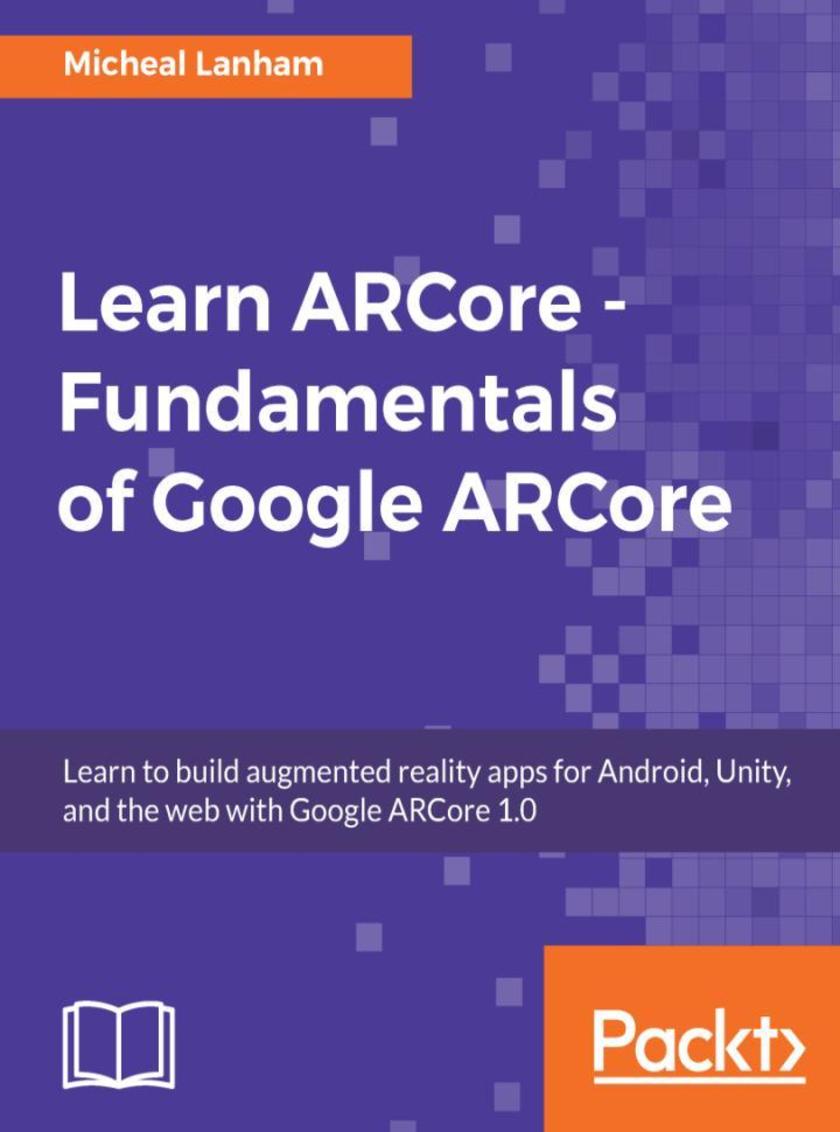
Learn ARCore - Fundamentals of Google ARCore
¥73.02
Create next-generation Augmented Reality and Mixed Reality apps with the latest version of Google ARCore About This Book ? Harness the power of the Google’s new augmented reality (AR) platform ARCore to build cutting-edge Augmented reality apps ? Learn core concepts of Environmental Understanding, Immersive Computing, and Motion Tracking with ARCore ? Extend your application by combining ARCore with OpenGL, Machine Learning and more. Who This Book Is For This book is for web and mobile developers who have broad programming knowledge on Java or JavaScript or C# and want to develop Augmented Reality applications with Google ArCore. To follow this book no prior experience with AR development, 3D, or 3D math experience is needed. What You Will Learn ? Build and deploy your Augmented Reality app to the Android, Web, and Unity platforms ? Implement ARCore to identify and visualize objects as point clouds, planes, surfaces, and/or meshes ? Explore advanced concepts of environmental understanding using Google ARCore and OpenGL ES with Java ? Create light levels from ARCore and create a C# script to watch and propagate lighting changes in a scene ? Develop graphics shaders that react to changes in lighting and map the environment to place objects in Unity/C# ? Integrate motion tracking with the Web ARCore API and Google Street View to create a combined AR/VR experience In Detail Are you a mobile developer or web developer who wants to create immersive and cool Augmented Reality apps with the latest Google ARCore platform? If so, this book will help you jump right into developing with ARCore and will help you create a step by step AR app easily. This book will teach you how to implement the core features of ARCore starting from the fundamentals of 3D rendering to more advanced concepts such as lighting, shaders, Machine Learning, and others. We’ll begin with the basics of building a project on three platforms: web, Android, and Unity. Next, we’ll go through the ARCore concepts of motion tracking, environmental understanding, and light estimation. For each core concept, you’ll work on a practical project to use and extend the ARCore feature, from learning the basics of 3D rendering and lighting to exploring more advanced concepts. You’ll write custom shaders to light virtual objects in AR, then build a neural network to recognize the environment and explore even grander applications by using ARCore in mixed reality. At the end of the book, you’ll see how to implement motion tracking and environment learning, create animations and sounds, generate virtual characters, and simulate them on your screen. Style and approach Practical examples that will take you through the basics of ARcore and teach you how to build an app using it.
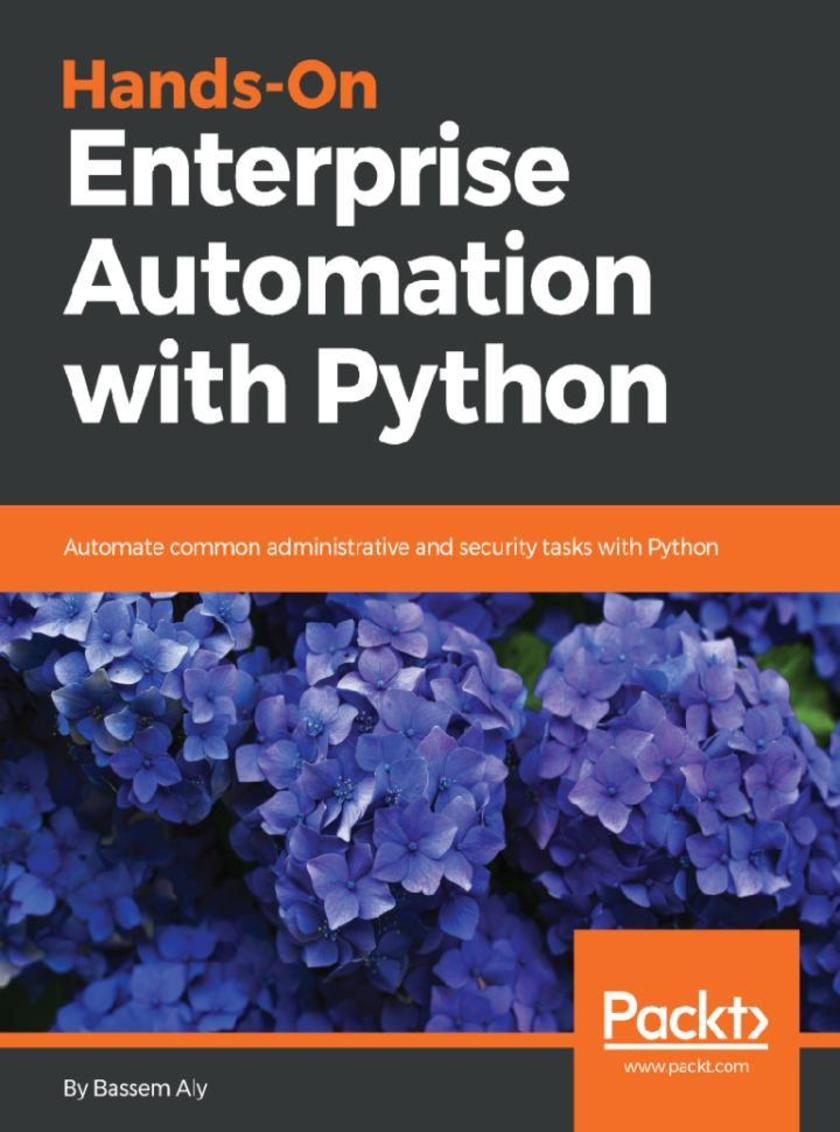
Hands-On Enterprise Automation with Python.
¥73.02
Invent your own Python scripts to automate your infrastructure About This Book ? Make the most of Python libraries and modules to automate your infrastructure ? Leverage Python programming to automate server configurations and administration tasks ? Efficiently develop your Python skill set Who This Book Is For Hands-On Enterprise Automation with Python is for system administrators and DevOps engineers who are looking for an alternative to major automation frameworks such as Puppet and Chef. Basic programming knowledge with Python and Linux shell scripting is necessary. What You Will Learn ? Understand common automation modules used in Python ? Develop Python scripts to manage network devices ? Automate common Linux administration tasks with Ansible and Fabric ? Managing Linux processes ? Administrate VMware, OpenStack, and AWS instances with Python ? Security automation and sharing code on GitHub In Detail Hands-On Enterprise Automation with Python starts by covering the set up of a Python environment to perform automation tasks, as well as the modules, libraries, and tools you will be using. We’ll explore examples of network automation tasks using simple Python programs and Ansible. Next, we will walk you through automating administration tasks with Python Fabric, where you will learn to perform server configuration and administration, along with system administration tasks such as user management, database management, and process management. As you progress through this book, you’ll automate several testing services with Python scripts and perform automation tasks on virtual machines and cloud infrastructure with Python. In the concluding chapters, you will cover Python-based offensive security tools and learn how to automate your security tasks. By the end of this book, you will have mastered the skills of automating several system administration tasks with Python. Style and approach This book will follow a practical approach to help you script and automate tasks using Python.
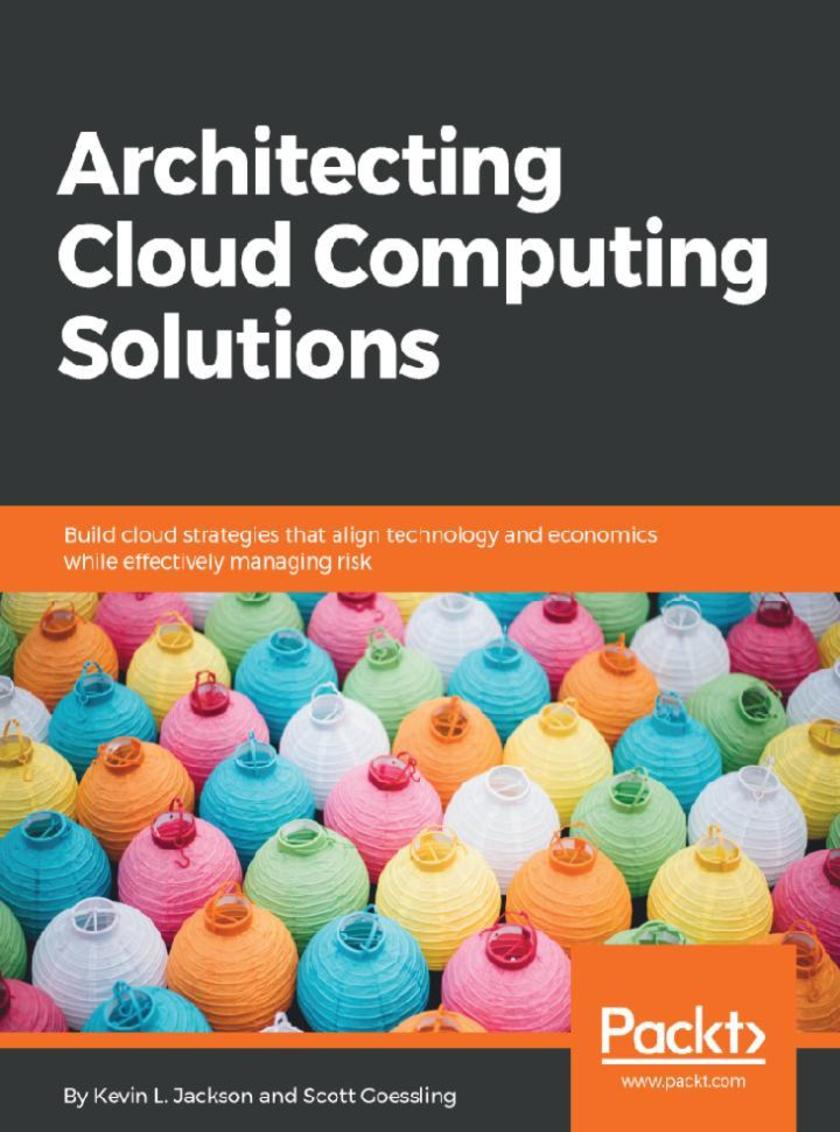
Architecting Cloud Computing Solutions
¥73.02
Accelerating Business and Mission Success with Cloud Computing. About This Book ? A step-by-step guide that will practically guide you through implementing Cloud computing services effectively and efficiently. ? Learn to choose the most ideal Cloud service model, and adopt appropriate Cloud design considerations for your organization. ? Leverage Cloud computing methodologies to successfully develop a cost-effective Cloud environment successfully. Who This Book Is For If you are an IT Administrator, Cloud Architect, or a Solution Architect keen to benefit from cloud adoption for your organization, then this book is for you. Small business owners, managers, or consultants will also find this book useful. No prior knowledge of Cloud computing is needed. What You Will Learn ? Manage changes in the digital transformation and cloud transition process ? Design and build architectures that support specific business cases ? Design, modify, and aggregate baseline cloud architectures ? Familiarize yourself with cloud application security and cloud computing security threats ? Design and architect small, medium, and large cloud computing solutions In Detail Cloud adoption is a core component of digital transformation. Scaling the IT environment, making it resilient, and reducing costs are what organizations want. Architecting Cloud Computing Solutions presents and explains critical Cloud solution design considerations and technology decisions required to choose and deploy the right Cloud service and deployment models, based on your business and technology service requirements. This book starts with the fundamentals of cloud computing and its architectural concepts. It then walks you through Cloud service models (IaaS, PaaS, and SaaS), deployment models (public, private, community, and hybrid) and implementation options (Enterprise, MSP, and CSP) to explain and describe the key considerations and challenges organizations face during cloud migration. Later, this book delves into how to leverage DevOps, Cloud-Native, and Serverless architectures in your Cloud environment and presents industry best practices for scaling your Cloud environment. Finally, this book addresses (in depth) managing essential cloud technology service components such as data storage, security controls, and disaster recovery. By the end of this book, you will have mastered all the design considerations and operational trades required to adopt Cloud services, no matter which cloud service provider you choose. Style and approach This book will teach you how to architect effective and organizationally aligned Cloud computing solutions by addressing Cloud computing fundamentals, Cloud architecture considerations, Cloud technology service selection, and Cloud computing security controls.
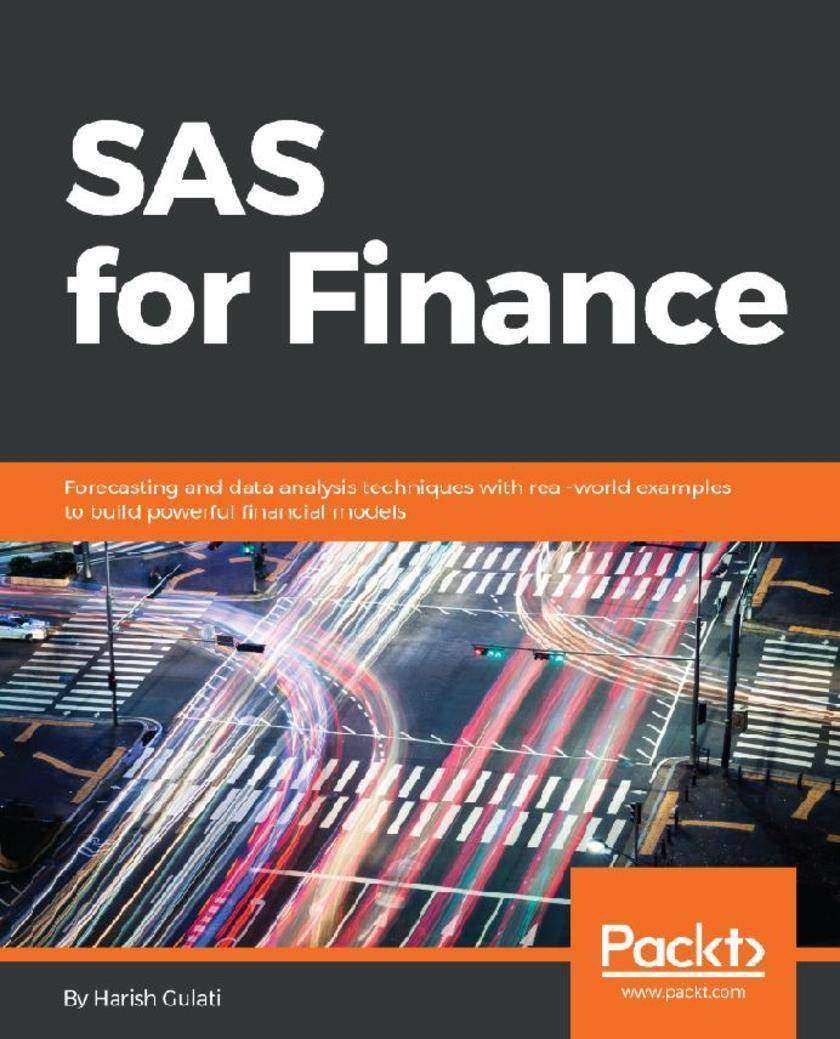
SAS for Finance
¥73.02
Leverage the analytical power of SAS to perform financial analysis efficiently About This Book ? Leverage the power of SAS to analyze financial data with ease ? Find hidden patterns in your data, predict future trends, and optimize risk management ? Learn why leading banks and financial institutions rely on SAS for financial analysis Who This Book Is For Financial data analysts and data scientists who want to use SAS to process and analyze financial data and find hidden patterns and trends from it will find this book useful. Prior exposure to SAS will be helpful but is not mandatory. Some basic understanding of the financial concepts is required. What You Will Learn ? Understand time series data and its relevance in the financial industry ? Build a time series forecasting model in SAS using advanced modeling theories ? Develop models in SAS and infer using regression and Markov chains ? Forecast in?ation by building an econometric model in SAS for your financial planning ? Manage customer loyalty by creating a survival model in SAS using various groupings ? Understand similarity analysis and clustering in SAS using time series data In Detail SAS is a groundbreaking tool for advanced predictive and statistical analytics used by top banks and financial corporations to establish insights from their financial data. SAS for Finance offers you the opportunity to leverage the power of SAS analytics in redefining your data. Packed with real-world examples from leading financial institutions, the author discusses statistical models using time series data to resolve business issues. This book shows you how to exploit the capabilities of this high-powered package to create clean, accurate financial models. You can easily assess the pros and cons of models to suit your unique business needs. By the end of this book, you will be able to leverage the true power of SAS to design and develop accurate analytical models to gain deeper insights into your financial data. Style and approach A comprehensive guide filled with use-cases will ensure that you have a very good conceptual and practical understanding of using SAS in the finance domain.
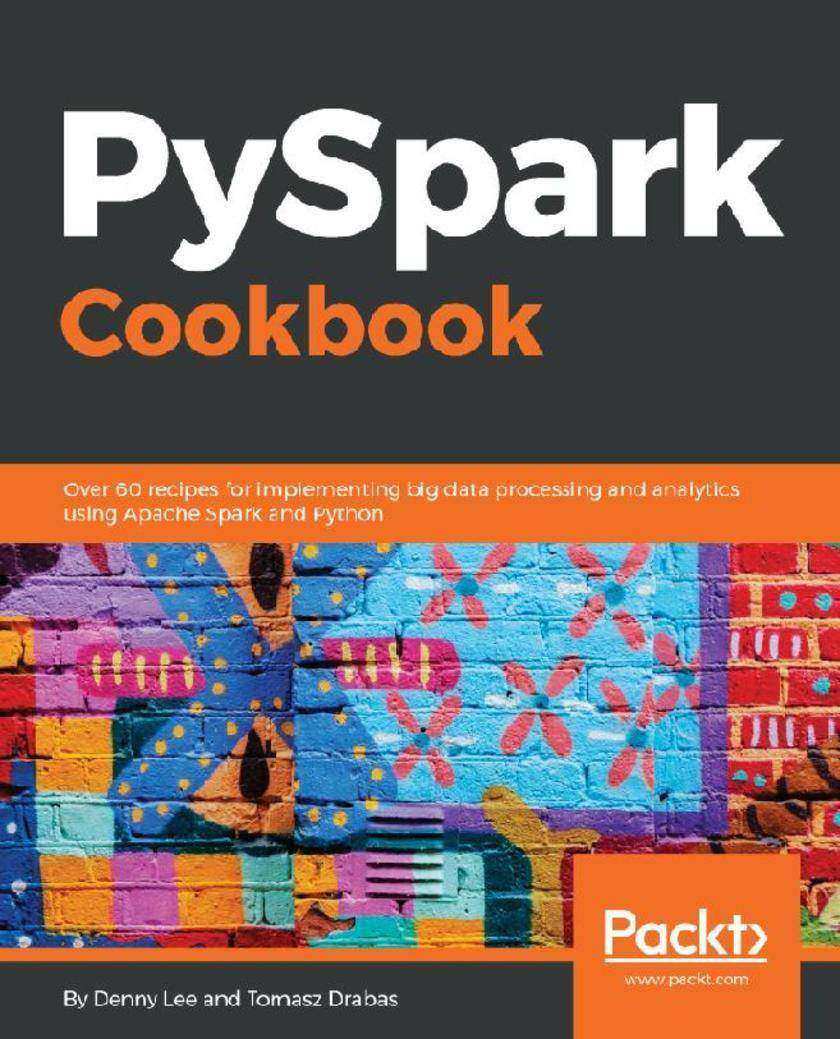
PySpark Cookbook
¥73.02
Combine the power of Apache Spark and Python to build effective big data applications About This Book ? Perform effective data processing, machine learning, and analytics using PySpark ? Overcome challenges in developing and deploying Spark solutions using Python ? Explore recipes for efficiently combining Python and Apache Spark to process data Who This Book Is For The PySpark Cookbook is for you if you are a Python developer looking for hands-on recipes for using the Apache Spark 2.x ecosystem in the best possible way. A thorough understanding of Python (and some familiarity with Spark) will help you get the best out of the book. What You Will Learn ? Configure a local instance of PySpark in a virtual environment ? Install and configure Jupyter in local and multi-node environments ? Create DataFrames from JSON and a dictionary using pyspark.sql ? Explore regression and clustering models available in the ML module ? Use DataFrames to transform data used for modeling ? Connect to PubNub and perform aggregations on streams In Detail Apache Spark is an open source framework for efficient cluster computing with a strong interface for data parallelism and fault tolerance. The PySpark Cookbook presents effective and time-saving recipes for leveraging the power of Python and putting it to use in the Spark ecosystem. You’ll start by learning the Apache Spark architecture and how to set up a Python environment for Spark. You’ll then get familiar with the modules available in PySpark and start using them effortlessly. In addition to this, you’ll discover how to abstract data with RDDs and DataFrames, and understand the streaming capabilities of PySpark. You’ll then move on to using ML and MLlib in order to solve any problems related to the machine learning capabilities of PySpark and use GraphFrames to solve graph-processing problems. Finally, you will explore how to deploy your applications to the cloud using the spark-submit command. By the end of this book, you will be able to use the Python API for Apache Spark to solve any problems associated with building data-intensive applications. Style and approach This book is a rich collection of recipes that will come in handy when you are working with PySpark Addressing your common and not-so-common pain points, this is a book that you must have on the shelf.
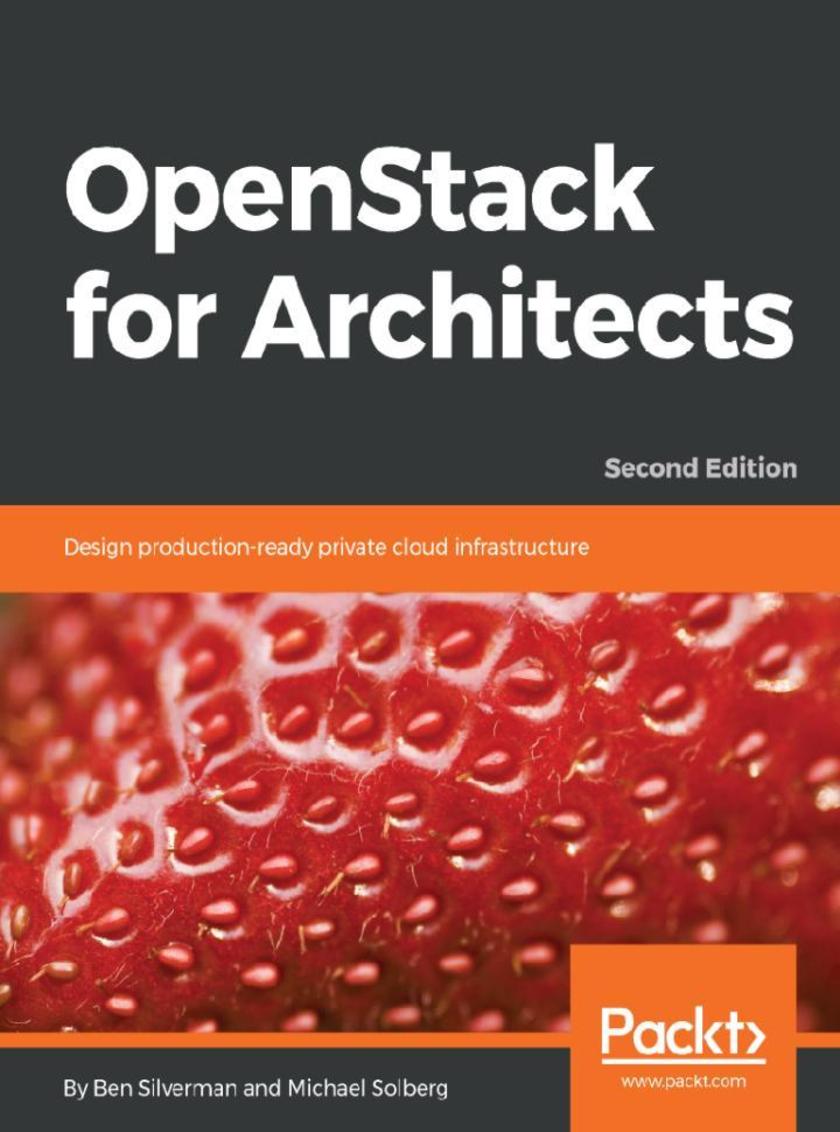
OpenStack for Architects
¥73.02
Implement successful private clouds with OpenStack About This Book ? Gain hands-on experience in designing a private cloud for all infrastructures ? Create a robust virtual environment for your organization ? Design, implement and deploy an OpenStack-based cloud based on the Queens release Who This Book Is For OpenStack for Architects is for Cloud architects who are responsible to design and implement a private cloud with OpenStack. System engineers and enterprise architects will also find this book useful. Basic understanding of core OpenStack services, as well as some working experience of concepts, is recommended. What You Will Learn ? Learn the overall structure of an OpenStack deployment ? Craft an OpenStack deployment process which fits within your organization ? Apply Agile Development methodologies to engineer and operate OpenStack clouds ? Build a product roadmap for Infrastructure as a Service based on OpenStack ? Make use of containers to increase the manageability and resiliency of applications running in and on OpenStack. ? Use enterprise security guidelines for your OpenStack deployment In Detail Over the past six years, hundreds of organizations have successfully implemented Infrastructure as a Service (IaaS) platforms based on OpenStack. The huge amount of investment from these organizations, including industry giants such as IBM and HP, as well as open source leaders, such as Red Hat, Canonical, and SUSE, has led analysts to label OpenStack as the most important open source technology since the Linux operating system. Due to its ambitious scope, OpenStack is a complex and fast-evolving open source project that requires a diverse skill set to design and implement it. OpenStack for Architects leads you through the major decision points that you'll face while architecting an OpenStack private cloud for your organization. This book will address the recent changes made in the latest OpenStack release i.e Queens, and will also deal with advanced concepts such as containerization, NVF, and security. At each point, the authors offer you advice based on the experience they've gained from designing and leading successful OpenStack projects in a wide range of industries. Each chapter also includes lab material that gives you a chance to install and configure the technologies used to build production-quality OpenStack clouds. Most importantly, the book focuses on ensuring that your OpenStack project meets the needs of your organization, which will guarantee a successful rollout. Style and approach This is practical, hands-on guide to implementing OpenStack clouds, where each topic is illustrated with real-world examples and then the technical points are proven in the lab. Conceptual chapters are written in discussion style to convey important concepts quickly and present decision points for choosing options.
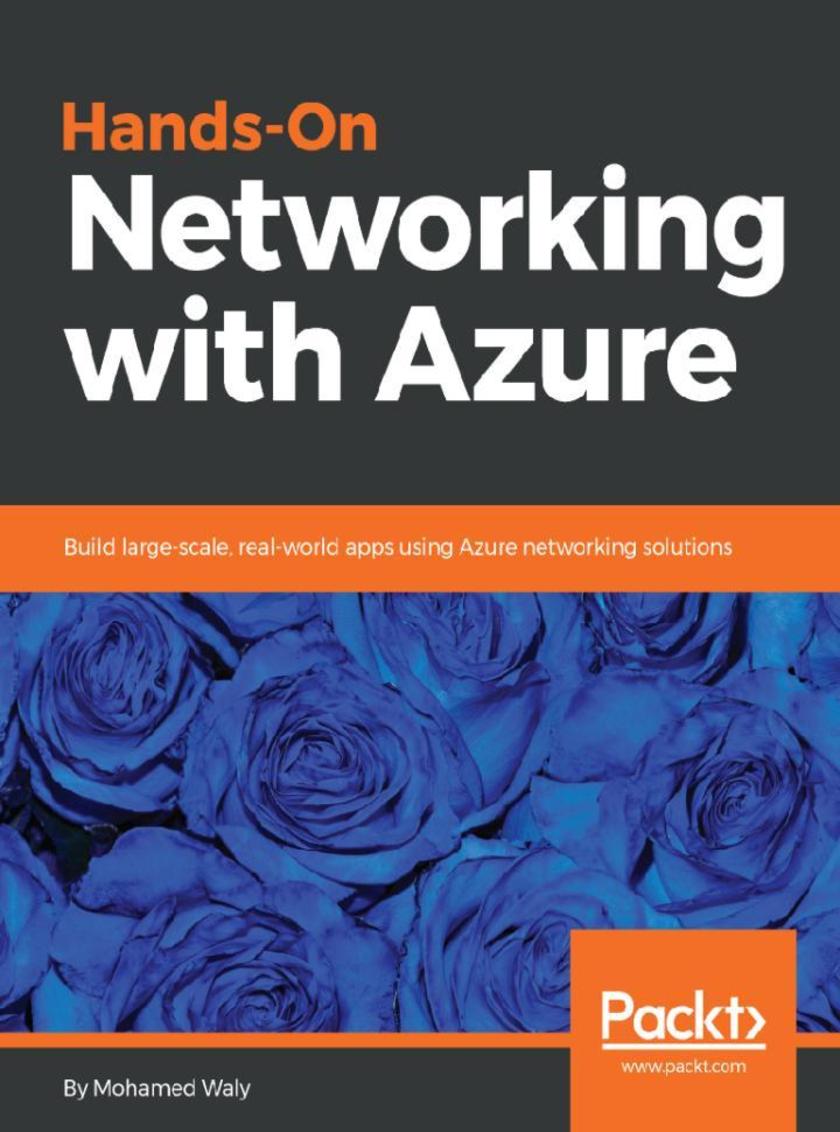
Hands-On Networking with Azure
¥73.02
A step-by-step guide to get you up and running with Azure Networking Services and help you build solutions that leverage effective design patterns About This Book ? Learn best practices for designing and implementing Azure Networking for Azure VMs ? Figure out the hidden secrets to designing a cost-effective environment ? Plan, design, and implement various connectivity scenarios in Azure Who This Book Is For This book is for developers, IT professionals, and database admins who have prior experience of working on Microsoft Azure and want to make the most out of Azure Networking Services. What You Will Learn ? Understand Azure networking and use the right networking service to fulfill your needs ? Design Azure Networks for Azure VMs according to best practices ? Span your environment with Azure networking solutions ? Learn to use Azure DNS ? Implement Azure Load Balancer for highly available environments ? Distribute user traffic across the world via the Azure Traffic Manager ? Control your application delivery with Azure Application Gateway In Detail Microsoft Azure networking is one of the most valuable and important offerings in Azure. No matter what solution you are building for the cloud, you'll find a compelling use for it. This book will get you up to speed quickly on Microsoft Azure Networking by teaching you how to use different networking services. By reading this book, you will develop a strong networking foundation for Azure virtual machines and for expanding your on-premise environment to Azure. Hands-On Networking with Azure starts with an introduction to Microsoft Azure networking and creating Azure Virtual Networks with subnets of different types within them. The book helps you understand the architecture of Azure networks. You will then learn the best practices for designing both Windows- and Linux-based Azure VM networks. You will also learn to expand your networks into Azure and how to use Azure DNS. Moreover, you will master best practices for dealing with Azure Load Balancer and the solutions they offer in different scenarios. Finally, we will demonstrate how the Azure Application Gateway works, offering various layer-7 load balancing capabilities for applications. By the end of this book, you will be able to architect your networking solutions for Azure. Style and approach This book provides in-depth insights into properly designing your environment and saving money on your running Azure Services. Using cutting-edge examples, you will learn to efficiently monitor, diagnose, and troubleshoot Azure Networking




 购物车
购物车 个人中心
个人中心



